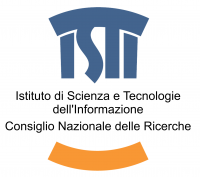Iza Romanowska, Juan Anton Barceló
In the last few years approaches commonly classified as computational modelling (agent-based and mathematical modelling, as well as other types of simulation) are becoming increasingly common and popular among the archaeological computing community.
Almost all research activity could be termed ‘modelling’ in some sense, for example, in archaeology we create conceptual models (hypotheses, typologies), spatial models (GIS), virtual models (3D reconstructions) or statistical models to name but a few. Most of them, however, investigate either the elements of the system (individual pots, skeletons, buildings etc.) or the pattern produced by the system elements (cultural similarities, settlement distribution, urban development etc.) and only theorize about the possible processes that led from the aggregated actions of individual actors to population-level patterns. In contrast, simulation allows us to investigate and reconstruct such processes in a formal way, threfore tackling some of the past complexity. It helps us to create ‘virtual labs’ in which we can test and contrast different hypotheses, find irregularities in the data or identify new factors and relationships which we would not suspect of having a significant impact on the system. In short, complexity science techniques have great potential for diverse applications in archaeology and may become a driving force for formalisation of descriptive models for the whole discipline.
The aim of this roundtable is to discuss the potential and challenges of complex systems simulation, including but not restricted to:
- the epistemology of computational modelling (what it can and cannot do);
- data integration and its use for model validation;
- system formalisation and the role of domain specialists;
- replicability and reuse of code;
- lessons learnt from other disciplines commonly using simulation (ecology, social science, economics etc.)
- communication between modellers and the wider archaeological public;
- further directions of research.
Finally, we would like to take this opportunity to propose the creation of a new Special Interest Group (SIG) under the auspices of CAA (named: ‘CAA Complex Systems Simulation SIG’), and to discuss a preliminary plan of the proposed activities of the SIG and an outline of how the SIG is to be organised.


